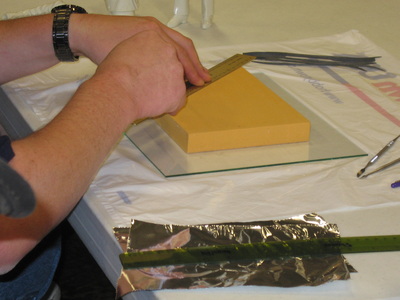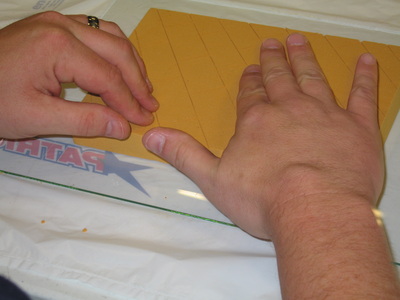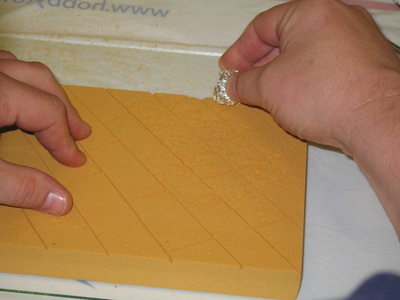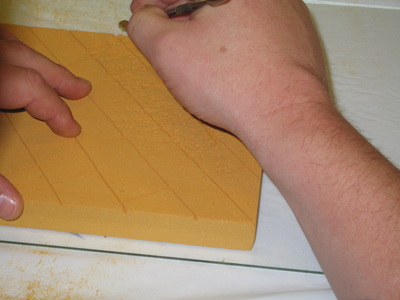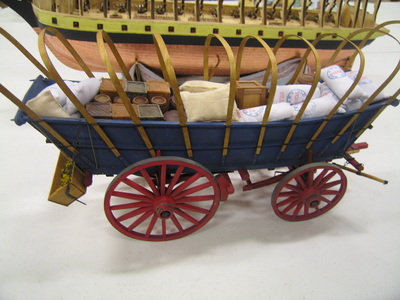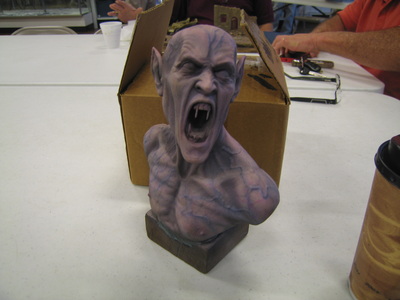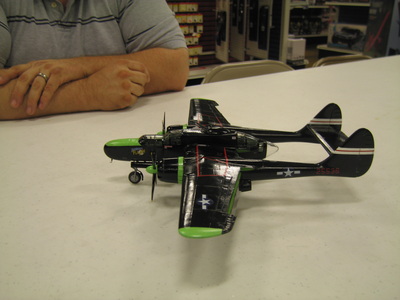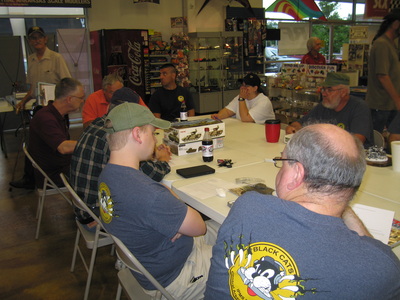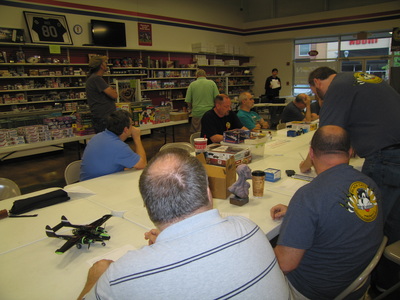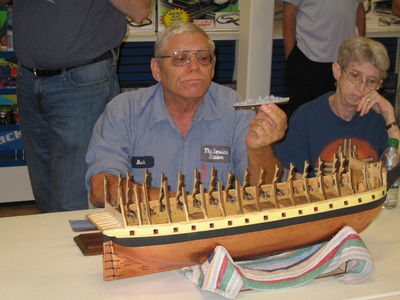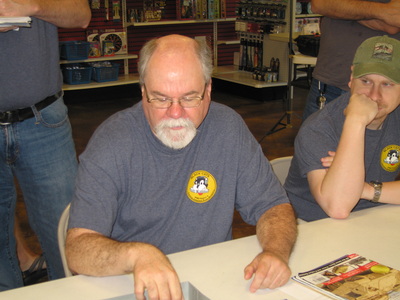|
Upcoming Shows in the area:
9/6 St. Louis MO, Gateway to the West 9/13 Arlington TX, SuperCon 2014 9/20 Covington LA, AutumnCon 2014 9/27 Little Rock AR, Sproo-Doo 2014 10/4 Huntsville AL, HPMS 38th Annual Contest 10/11 Wichita KS, ConAir 2014 10/18 KS City MO, Region 5 Convention CASM membership elected the following members as the next CASM officer board:
President-Ray Smith Vice-President-Rick Knapp Secretary-Matt Bond Club Contact-Mike Warren Treasurer- Brent Bristow Co-Show Coordinators-Brianna Childress/ Ron Leker. Congratulations to all! I joined CASM nine years ago. I had previous experience in a model club in Iowa prior to that time, was considered a “pretty good” modeler, and had won a number of first place medals in contests. The Iowa club was small by CASM standards and had a few “master” level modelers. The rest of us were “pretty good.” When I looked at the models that were brought in by CASM club members at my first CASM meeting I was awed. I had seen excellent models before but it was the large number of members who brought in extraordinary models that surpassed my previous experiences. I had entered the meeting, I have to admit, with a little bit of swagger and arrogance but was immediately humbled by the quality of the work. I still experience this feeling of humbleness and the swagger has been gone for many years. The members of CASM do not rest on their laurels by staying stagnate in their modeling skills. They improve their modeling with every model they build. If the goal of a “pretty good” modeler is to beat the next best modeler in competition, the target is elusive because CASM members just keep getting better.
What distinguishes a “pretty good” model from a “master” level model? The answer is finesse. Finesse Noun 1. intricate and refined delicacy. Synonyms: skill, skillfulness, expertise, subtlety, flair, panache, elan, polish, artistry, virtuosity, master. Verb 1. Do (something) in a subtle and delicate manner. Pretty good models are often well constructed. Seam lines are invisible or nearly invisible. The paint selected is composed of the “correct” colors for the subject. Washes may be used to set off detail and are usually composed of the colors available and premixed from the hobby shop. Some highlighting is used to lift details. Some weathering is present. A master modeler takes the model to the next step. A master model is also well constructed but there are no seam lines present, even if the light shines just right that often exposes irregular seams. The paint selected is “correct” for the subject selected but texture of the surface, age of the paint, and the weather conditions of the piece are taken into consideration to alter the paint tones. Even though there is texture, the pain itself is smooth. Washes are used but the washes are often an alteration of the base color and are applied in a manner in which they accent the details but are not necessarily “seen.” Highlighting is used to create volumes to the model and the color selected has warmer tones than the base color. The highlights are added in a manner that creates gradations of color that are seamless. Color is layered in a seamless manner. Details are added that create interest in the model and add additional volume to the observed surfaces. Weathering is added (depending on the genre) that further advances the “story” of the piece and creates interest in the piece that prolongs viewing by a person looking at the model. How did master modeler’s learn to model in this way? I do not consider myself a master modeler, however, we have members of the club who are masters. I have worked toward becoming a master modeler and have taken steps that can be followed to learn and develop the master’s touch. Skill refinement is the first step. Skill refinement requires repetition and familiarity with the modeling process. Repetition requires building many models. For the last seven years I have selected models that are relatively inexpensive ($30.00 to $45.00 range), often of subjects that have little intrinsic interest to me. Some of the models would be considered to be of poor manufacturing quality which requires refined construction skills to produce a high quality end product. For each model I emphasize learning at least one or two techniques. Please note there is an intention of learning the new technique as the model is approached for building and finishing I only choose one or two new methods at a time because there are so many techniques necessary to build a master level model that the task would become too daunting to work on more than two on any given model. Because the cost of the model is low I do not have to worry and fret about messing up a more expensive model. With each successive model I build on the techniques I have learned from the previous models and add further techniques to my repertoire. Building on previous skills leads to the refinement of the previously learned techniques and that part of the modeling build shifts from being technique driven to being more artistically driven and delicate. Intentionally learning new skills with each model adds skill level to each model built as well as errors from the application of the new technique. There are club members who have complimented me on the rendering of skin tones (I am a figure modeler), for example, but I have used the above process for over seven years to reach a point where skin tones are rendered more artistically and are less driven by technique. They still are not at the master level but they are becoming closer to that level of expertise. A second step is building models from different genres. Cross building refines technique and strengthens skillfulness in the modeling process. Each modeling genre emphasizes different aspects in the final “look” of the model. Yet, the final look from the different genres can be incorporated in the genre of model that is your preference. I recently built several armor models and had to learn weathering techniques, for example. My attempts to weather the armor are rather crude when compared to really good armor modelers but the repetition taught me weathering techniques that I was otherwise unfamiliar. Learning those techniques will add another dimension to the figure models I have on my shelf and will add texture to the models that I otherwise would not have considered. The repetition of the technique on the armor models provided me the opportunity to refine the weathering skills that I can later apply to future figure and sci/fi models I have. Becoming comfortable with making mistakes and overcoming mistakes develops artistic skill. There is less stress for me when I make mistakes on an inexpensive model that I have little interest in than on more expensive models in which I have an invested interest. Skills cannot be developed without making mistakes. Skill refinement cannot occur without mistakes. If a modeler adopts a frame of mind to refine a few new techniques with each model then there are only a few mistakes that are made with different techniques. Instead of being filled with fear of making a mistake the modeler can relax and just enjoy the process of refinement that becomes a part of learning something new. A third step in skill development is becoming familiar with the characteristics of the materials being used. Understanding the properties of acrylic or oil based paints increases the number of options available in creating a final finish. Understanding how to use an airbrush or how different kinds of paintbrushes creates different looks then increase what can be done to achieve the final look of a model. Learning how to use different glues and fillers aids in understanding how to eliminate seam lines. Again, learning this information has to be by intention and by observation of how materials and tools function under different circumstances and enhances future efforts. A fourth step in skill development involves reading articles or viewing videos of master modelers building models. I have found if I do exactly what they say to do, I develop a better understanding of what they are doing which then facilitates my own ideas and allows me to develop my own take on the final model. There are some people who are better than me who can develop their own methods just by reading or viewing but I am not able to do that yet. Even though I have the ability to visualize what I read I have to physically follow all of the steps of the master before I start to understand the reasons for their technique. Modeling with other models also facilitates growth in technique. Being able to observe what other modelers do, ask questions, and ask for assistance can be of great benefit. Motivation for skill refinement in modeling is important. Early in my modeling experiences, I was motivated by competition. I was driven to do what was necessary to beat my fellow modelers in contests and, if I did so, validated my modeling skills. More recently (over the past nine years) I am more motivated by personal changes, the development of skills, and the joy that comes from making successively better models. A few pats on the back are nice as well. I also enjoy sharing the knowledge and skills I have with others to assist them in their own skill development. I gain little motivation with competing with others and more motivation by competing with myself. Although, I have to admit, I would like to kick a little butt at a contest from time-to-time. The drive to build successively better models is far more rewarding for me than beating people with lesser skills in competition. Beating a “big dog” is momentarily satisfying. I have offered steps to develop finesse. While the steps have been presented in sequential order the process is not sequential. It is cumulative. Any modeler can learn and develop into a master modeler. The process requires focus, intention,perseverance, and fearlessness but is very doable. The end result is an increasing amount of enjoyment in the modeling hobby. I encourage all modelers to pursue the road to finesse in their building of models and to enjoy every project they undertake. |
Archives
February 2017
|




